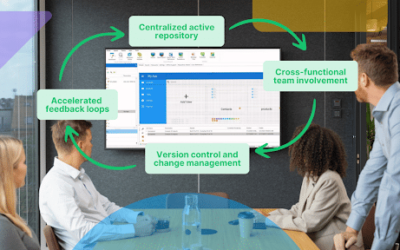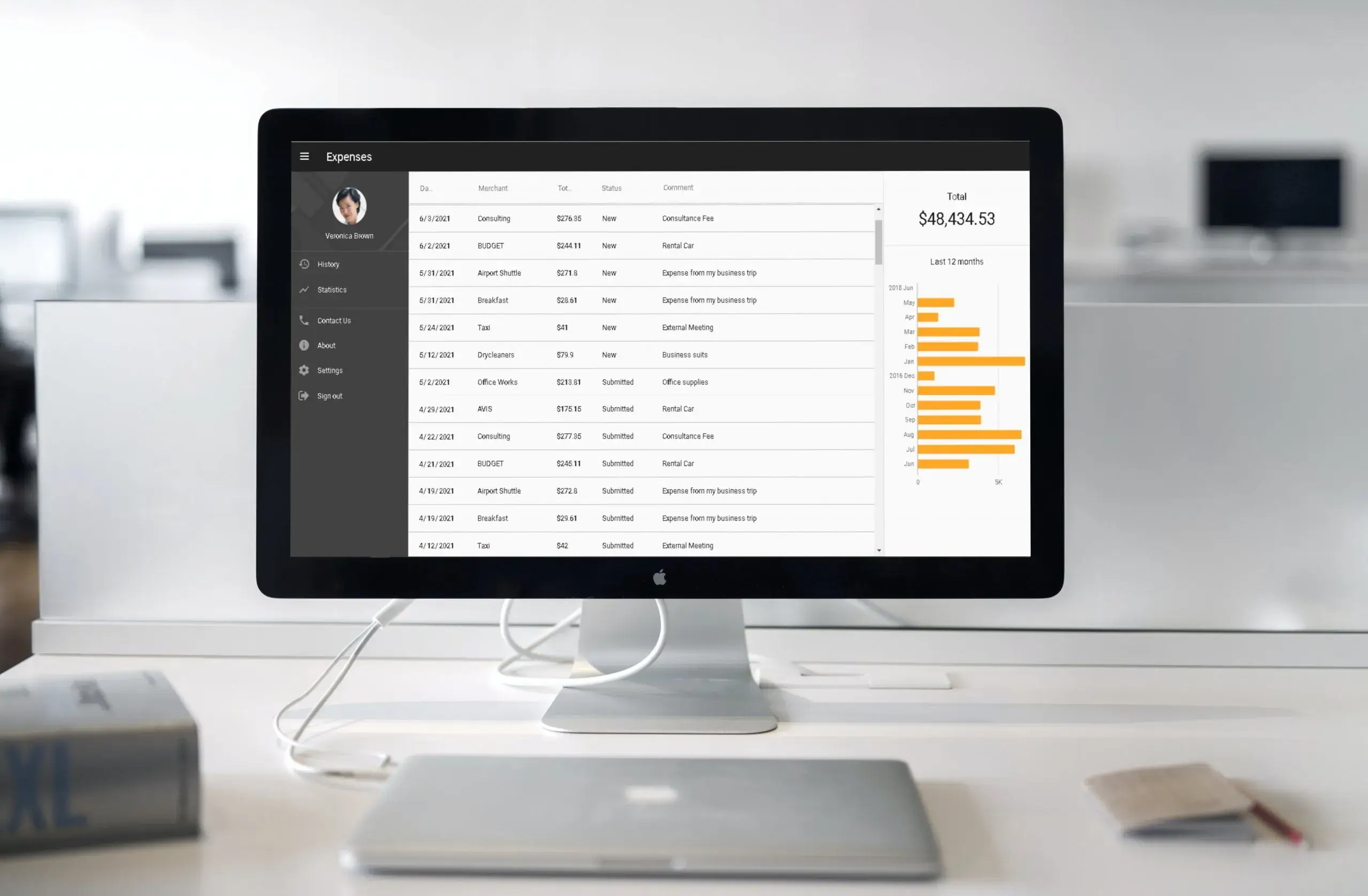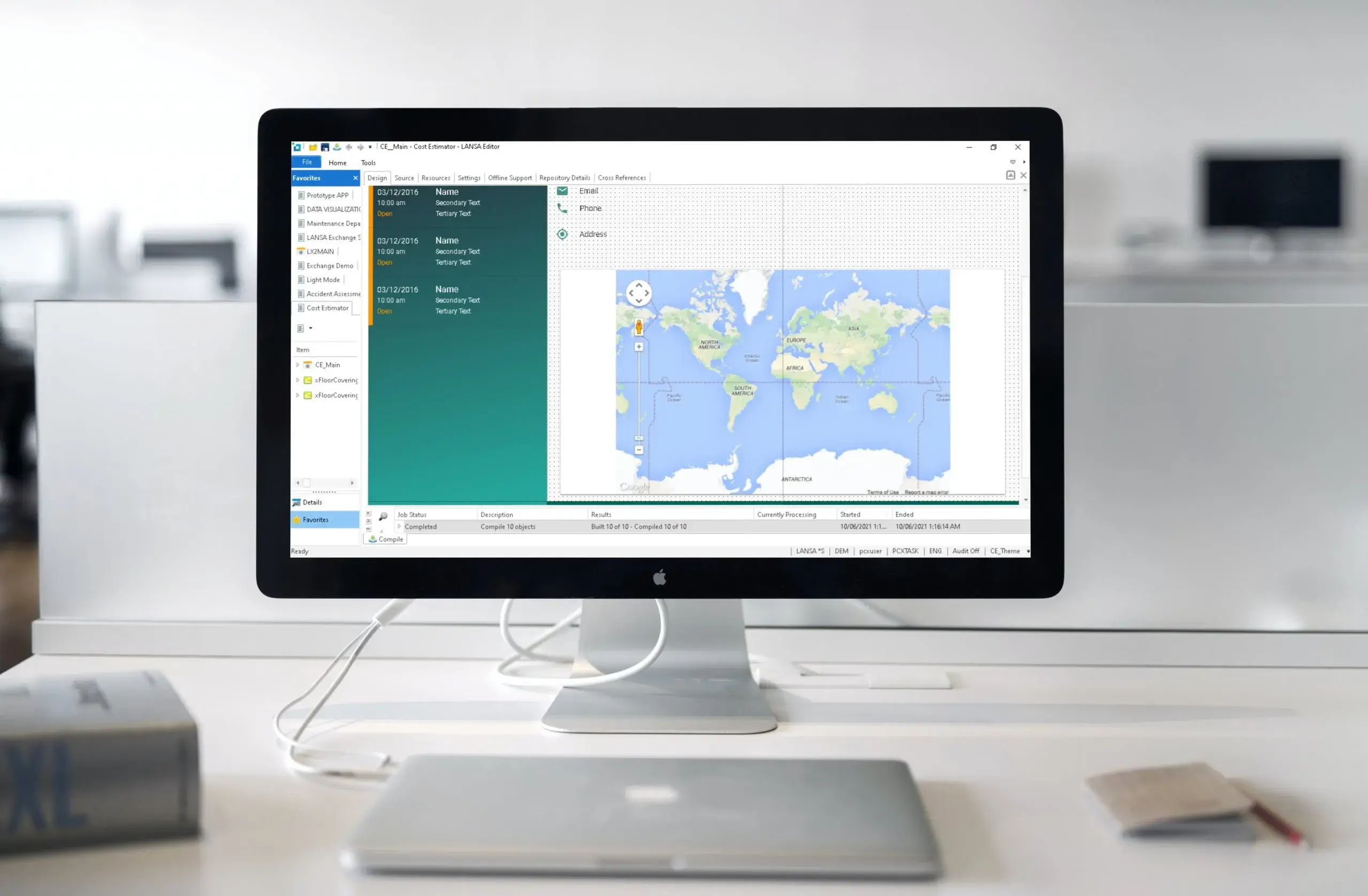Product manufacturing gets more complex every year. The process required to build products at scale is also getting more complicated. Moreover, as the difficulty of manufacturing and bringing a product to market increases, so does the pressure to launch new products. This means many manufacturers find themselves in a conundrum. Simply put, while consumer expectation and demand are at an all-time high, competitively producing goods has never been more difficult.
This is why the manufacturing industry is increasingly turning to digital transformation and application modernization initiatives to optimize its growth and development. But transformation is not that simple. As a result, many businesses in the manufacturing sector are lagging behind. They are looking for a way to affordably leverage digital technologies to optimize their manufacturing processes and make them faster, more efficient, and cost-effective.
Does manufacturing need digital transformation?
There are many reasons manufacturers fall behind when it comes to integrating new technologies. The size of the manufacturing operation is one of these factors. Large factories and plants face difficulties integrating automation solutions due to their large amount of machinery and complex assembly lines. Conversely, small and medium manufacturing companies often don’t possess the financial resources and qualified specialists required to introduce new solutions.
At the same time, manufacturing businesses of all sizes across the globe are facing serious systemic challenges. These challenges, however, are forcing them to look for solutions in order to increase efficiency and stay competitive. According to a report by Scott Technology, Labor shortages, high staff turnover, and work-related accidents/injuries are among the main issues affecting manufacturing businesses today. Increasing competition is another factor that drives digital transformation in manufacturing.
Fortunately, solutions to these problems exist. Custom-created applications can be an extremely powerful, affordable, and accessible way to accelerate manufacturing, reduce costs, and improve employee satisfaction. Manufacturing apps are able to play a key role in optimizing the manufacturing processes for both large companies and SMEs.
For organizations looking to transform and automate their processes, LANSA’s low-code platform enables them to build web and mobile enterprise applications in the most efficient and user-friendly way possible. Simply put, low code is one of the best solutions available to the manufacturing sector today.
By way of proof, here are five specific examples of easy-to-build, custom app solutions that can empower your manufacturing business’s digital transformation initiatives. Most importantly, all of these examples are based on real business cases and the success stories of our clients.
1. Manufacturing guide apps.
Paper-based work instructions are an undeniably outdated method of instructing manufacturing workers. Despite this, paper-based processes are not even close to being obsolete. In fact, you’d be surprised to learn how many manufacturing operations around the globe are still relying on paper-based documents. Printed guides and audit procedures are still commonplace.
Needless to say, paper-based work instructions are always a source of friction. Mistakes and delays are common. Paper workflows are also much slower and less trackable, which is a major obstacle when optimization is your goal.
Creating your own mobile and web applications with Lansa’s low-code platform is the perfect solution to the paper problem. You can easily digitize all your instruction manuals, audit reports, assembly guides, and other work documents. With digitization, you create your own interactive content. For example, you can create a manufacturing guide app, designed to lead your operators through different parts of a complex assembly process. This alone can significantly speed up multiple components of the manufacturing, increase production yield and reduce assembly-related quality issues.
The time savings, in most cases, exceeds 25%.
2. Real-time data collection and analysis apps.
Using paper-based documents also limits your data collection capabilities. It is slow, unreliable, and difficult to manage. Creating and integrating low-code apps is a great way to establish real-time data collection and analysis, crucially important components of manufacturing optimization.
With an interactive app, assembly line workers can add new process-related data to the system in real-time. The new data is immediately accessible. It is ready for you to analyze and visualize on dashboards, with all the necessary KPIs and other information available at a glance.
3. Management and performance monitoring apps.
Performance monitoring and management are other pieces of the puzzle. Data collected and analyzed in real-time can be used by management applications and custom-created to match the specific needs and requirements of your company. A performance monitoring app displays all your critical information on a dashboard in an accessible and easy-to-understand way. Performance monitoring apps also provide your management with regular automated reports and insights. They will notify them about any issues in your production process or serve as a feedback and communication tool between your workers and management.
4. Feedback integration apps.
Feedback integration is another powerful way to transform your manufacturing processes with easy-to-develop low-code applications. In terms of manufacturing optimization, integrating a feedback app into your operation can be a key component of greater efficiency. Feedback integration apps allow your workers and engineers to adopt a new, more flexible approach to all their work processes. With real-time feedback, you can introduce improvements much faster, promptly address problems and errors, and eliminate countless production issues as they occur.
5. Maintenance apps.
Specialized maintenance applications are another great way to achieve substantial benefits out of easy to create and very affordable enterprise applications. The adoption of such an app can improve the quality of the technical maintenance of your manufacturing machinery. The result to your organization is lower costs and increased throughput on your production lines.
Maintenance apps are very flexible. They can have multiple features which include assigning tasks to technical engineers, providing staff with information and instructions, allowing workers to report about specific maintenance needs, and collecting and presenting key information to management dashboards.
Know which solutions to integrate and how to enforce them in this article about IBM i Disaster Recovery.
How can I get one step ahead of the competition?
It is pretty obvious that when it comes to low-code enterprise apps in manufacturing, the possibilities are truly limitless. more importantly, the results are very real and measurable. Even better, you can start utilizing these technologies today with Visual LANSA, which is a powerful development environment that pushes the boundaries of what is traditionally considered low code.
Visual LANSA allows organizations to empower their manufacturing optimization initiatives by building everything from basic applications to handle tasks, to systems that send feedback to complex assembly line applications to monitor, collect, and analyze data.
Learn more about LANSA’s well-celebrated IBM Champion and his contributions to the IBM community.
To learn more about how Visual LANSA can help your application development evolve, contact sales.



























